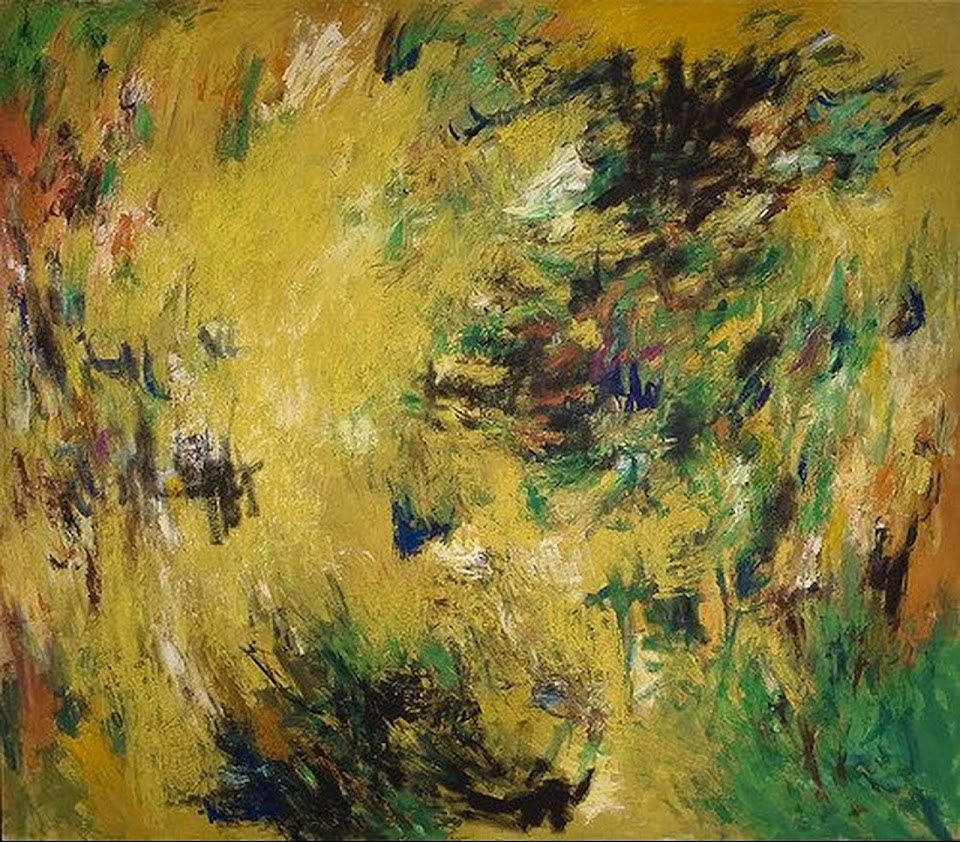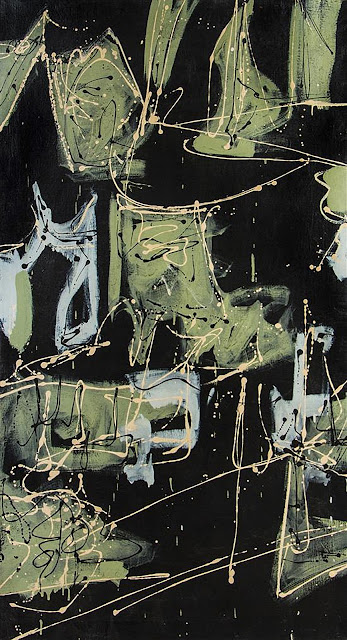“What the superior man seeks is in himself;
what the small man seeks is in
others.” ― Confucius
Following World War II the relevance of
individual identity in art has been
disregarded. This blog intends to shed light on
the continued expression of individuality by
artists.
[All modern artists have] "the desire to give to
the object a functional beyond its naturalistic
aspect to free it from its accidental
surroundings, to develop and organize it within
the frame of the picture into an emotional
potential. In other words, the object is
elevated to a symbol."
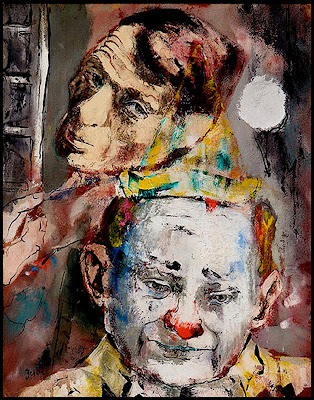 |
| Karl Zerbe, Self Portrait with Clown, 1945. Encaustic, 19 1/2 x 15 1/4 inches. |
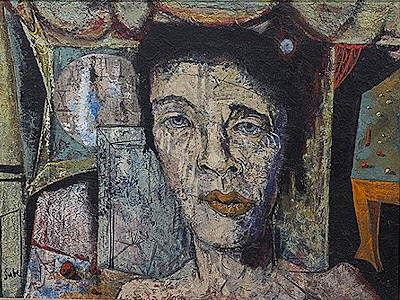 |
| Karl Zerbe, THE MASK OF HER FACE, 1948. Tempera on board, 20 x 25 3/4 inches. |
 |
| Karl Zerbe, Cyprus II, 1955. Encaustic on board, 39 x 24 inches. |
Balcomb Greene (1904 – 1990)
"I do not believe that art should be explicit," .... It should be suggestive and ambiguous so that the viewer has to enter in."
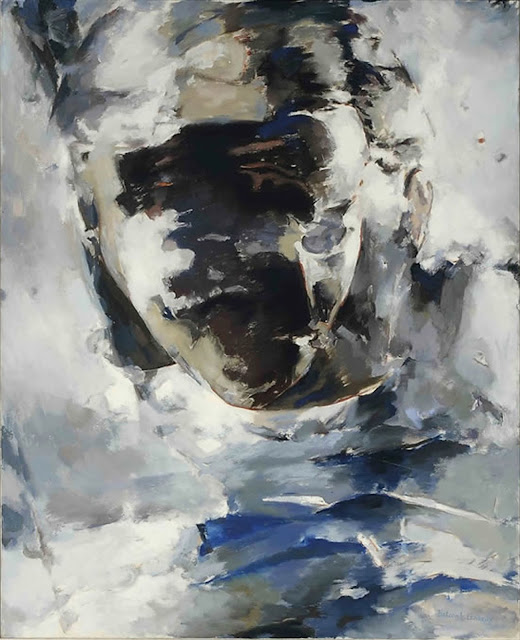 |
| Balcomb Greene, Gertrude III, 1958. Oil on canvas, 62 1/4 x 50 inches. |
 |
| Balcomb Greene, Two figures,1970. Oil on canvas, 56 x 46 inches. |
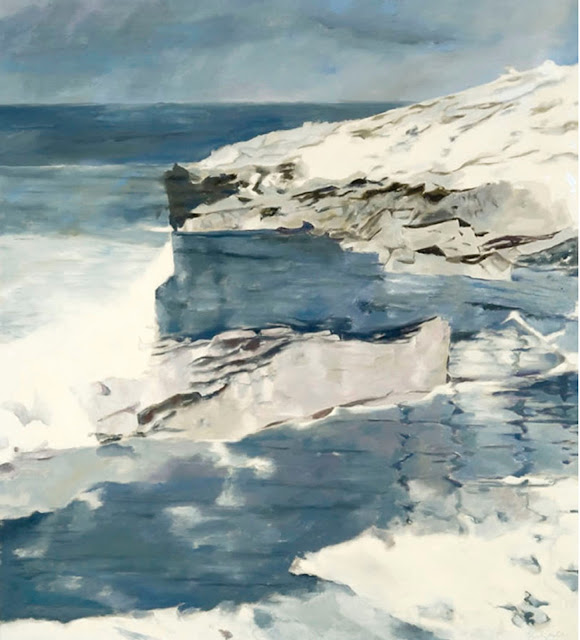 |
| Balcomb Greene, Shadows and Sea, 1970. Oil on canvas, 61 x 55 inches. |
Albert Kotin (1907 – 1980)
"As long as there are people such as Al Kotin,
there is no danger to art." - Alexander Calder
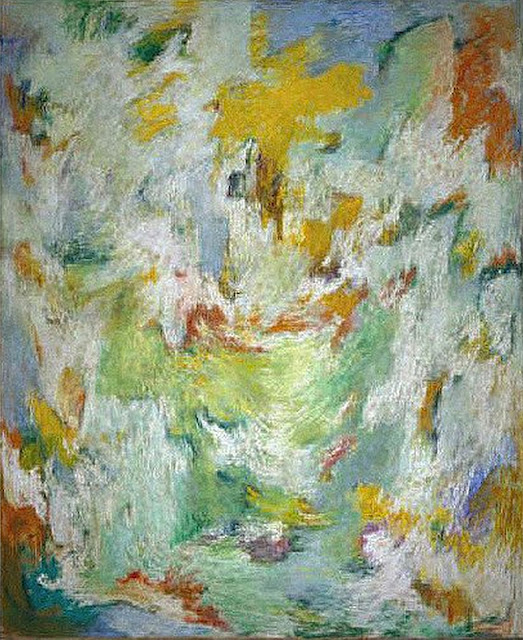 |
| Albert Kotin, Untitled, 1954. Oil on canvas, 70 x 58 inches |
 |
| Albert Kotin, Party IV, 1964. Oil on canvas, 36 x 30 inches. |
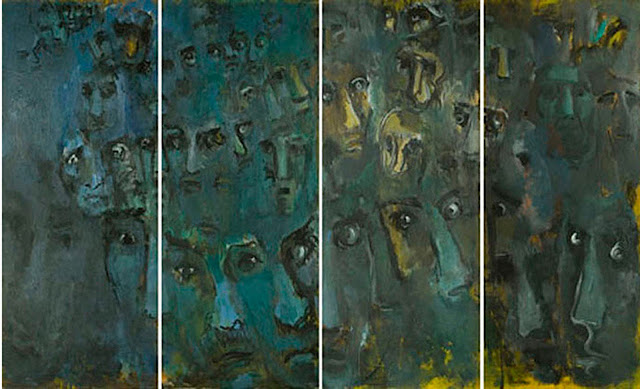 |
| Albert Kotin, Testigos, 1968, Quadriptych. Oil on canvas, 104 x 63 inches. |
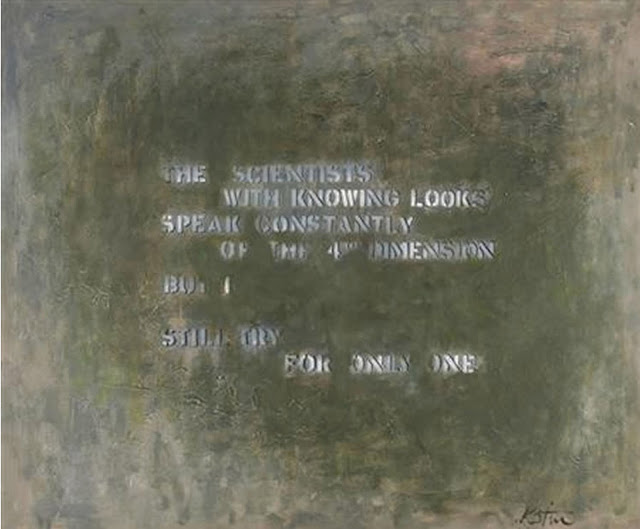 |
| Albert Kotin, Modesty... The Scientist, 1968, Oil on canvas, 39 3/4 x 48 inches. |
"For myself I venerate all of that which I am
forced to call , for the sake of clarity, the past,
my own Western Heritage and the even older
and brilliant past of the Far East and Near East
and their multiple cultures. In this way I feel I
pay homage to the Titan's, both anonymous
and known."
 |
| Ezio Martinelli, Untitled, 1950. Oil on canvas, 79 1/2 x 23 1/2 inches. |
 |
| Ezio Martinelli, Grief, 1951. Oil on canvas, 60 x 25 inches. |
 |
| Leon Golub, The Orator IV, 1962. Oil on canvas, 37 x 30 3/4 inches |
Robert Nathans (1955 – 2016)
"I bring all my memories with me as I stand in
front of my canvases. Here my intuition comes
into play. It will sometimes take me months of
working. Then, somewhere in this process of
painting and observing. I would inextricably
disappear. Unaware of body, time, and space
when I become painting."
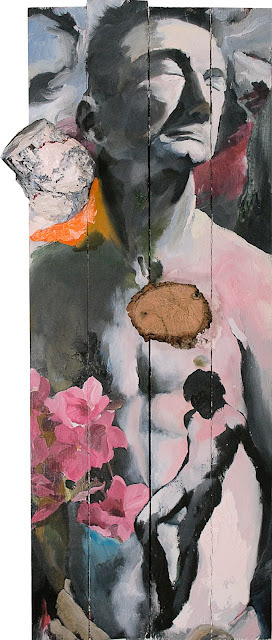 |
| Robert Nathans, The Distractive Character, 1986. Oil on wood and tree stumps, 36 x 14 inches. |
Anki King (1970 – )
"Emotions are the base of the work I make and
I use paint and brushstrokes to express what I
want to say, and the feeling I wish to convey.
Painting to me is a collaborative process. Oil
paint is a live medium and if you do something
with it, it does something back that you again
can respond to; it is a communication. Every
work I create contains figures or figurative
elements. I always enjoyed the figure and I
have a love relationship with it as form. It is
also the most direct way I can convey my own
experience and it is ultimately this experience
I create out of."
 |
| Anki King, Broken Mannequin, 2002. Oil on canvas, 39 x 36 inches. |
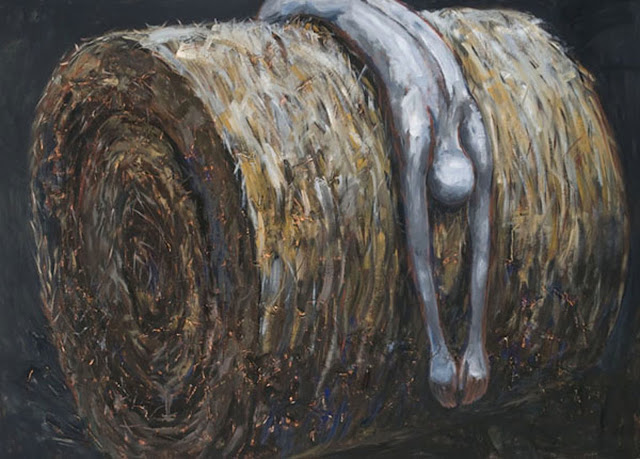 |
| Anki King, Fall, 2012. Oil on canvas, 54 x 74 inches. |

